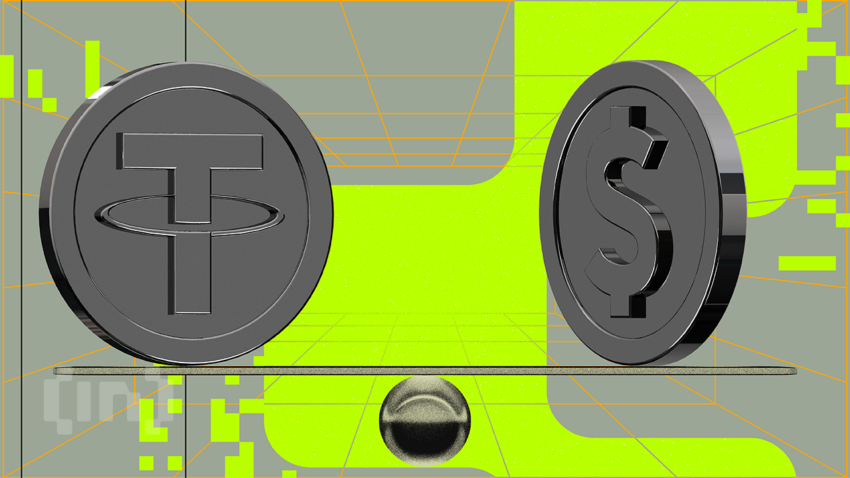Stablecoins play a crucial role in the crypto space, acting as go-to fiat replacements across crypto exchanges. Additionally, with the U.S. Feds hiking rates aggressively in 2023 — making dollar reserves dearer — a number of new players entered the stablecoin marketplace. So, which of these fixed assets stand out from the crowd in 2024? This guide lists the best stablecoins on the market and considers the advantages, promises, and limitations of this unique asset class.
What are the best stablecoins?
1. PayPal USD (PYUSD)
PayPal’s introduction of PYUSD, their new stablecoin, marks a significant step in bridging the gap between traditional finance and the crypto world. Developed in partnership with Paxos, PYUSD is a compliant stablecoin that integrates seamlessly with PayPal’s vast network. This initiative allows users to pay with crypto wherever PayPal is accepted, effectively addressing the merchant problem in web3.
In addition to its use in CeFi and DeFi, PYUSD’s unique selling proposition is its ability to be swapped within the PayPal ecosystem. Users can send cryptocurrency to their PayPal account, convert it to PYUSD, and then use it for transactions anywhere PayPal is available.
2. Tether (USDT)
Tether is a fiat-collateralized asset that’s backed by the dollar. USDT is issued on multiple blockchain platforms, including but not limited to Ethereum (as an ERC-20 token), Tron (as a TRC-20 token), and the Bitcoin blockchain via the Omni Layer Protocol.
Tether is the most popular stablecoin in the world, at least in terms of market cap. And you might just consider it one of the best, globally popular stablecoins. It came on the market back in 2014 and has now grown to become the third most valuable digital asset in 2024.
3. USDCoin (USDC)
USD Coin (USDC) is a fiat-collateralized stablecoin that is pegged 1:1 with the dollar. CENTRE is the brain behind USDC — a joint venture between payment processor Circle and crypto exchange Coinbase. It’s also available on most popular crypto exchanges.
USDC is the second-largest stablecoin by market capitalization and even includes Treasury Bills as part of the collateral consortium.
USDC lives on Ethereum, works an Ethereum token, and exists on four other blockchains. The issuers also maintain popular financial services company Grant Thornton as auditors for its reserves.
4. Dai (DAI)
DAI was developed in 2017 by MakerDAO, a decentralized, autonomous organization.
Unlike the tokens above, DAI is a crypto-collateralized stablecoin. While it has been criticized as being overly complex, the asset’s model is becoming popular and is an important aspect of DeFi. It has recently integrated real world assets (RWA) as collateral.
5. TrueUSD (TUSD)
As its name suggests, TrueUSD is another “dollar-backed” stablecoin — on the Ethereum blockchain. TrueUSD shares quite a lot of similarities with Tether and yet is not so much of a crypto exchange favorite, unlike the latter.
The company makes a point to provide full transparency with investors and customers. It makes regular attestations and also publishes financial reports on Twitter.
What are stablecoins?

In its simplest sense, a stablecoin is a form of digital currency that provides price stability via backing by a reserve asset.
Cryptocurrencies have become popular over the years. But, when most people talk about crypto, they think about BTC, ETH, XRP, and a select few others. The problem with this set of assets is the volatility.
There are several reasons why the market is so unpredictable. The first is market size. Despite the media attention, the cryptocurrency market is still small in terms of market capitalization when compared to well-established markets like the U.S. stock market or the gold market.
With crypto, a small movement of funds could create a ripple effect on the market. You also have to look at the technology backing them. Blockchain is still a nascent tech that has room to grow. So, crypto has proved itself to be a willing store of wealth. Yet frequent price crashes, as witnessed throughout the bear market, will always affect the standing of decentralized assets as an investment vehicle.
The need for stablecoins
Reducing volatility: This is the most pressing need for stablecoins. Traditional cryptocurrencies are volatile, and investors wanting to participate in the market need assets that can at least promise a considerable level of stability. Improved stability also helps with market predictions and institutional investment.
Cryptocurrency adoption: Whether for retail or institutional investors, digital assets that are highly volatile are just a hard sell. Their volatility hinders adoption by businesses and for making payments. Stablecoins can speed this up and attract more investment into the cryptocurrency sector. Also, users can convert many of these assets into traditional cryptocurrencies. A popular trading pair, for example, is BTC/USDT.
Hedging: By virtue of their stability, stablecoins provide investors with the option to hedge their wealth against uncertainty. Even citizens in inflation-ridden economies can use these assets to preserve their wealth, often as a store of value.
The advantages of stablecoins
- Stablecoins provide the same benefits as cryptocurrencies (low transaction fees, fast transactions, security) while still providing the stability that traditional digital assets lack.
- Regulatory control
- They aid cryptocurrency adoption
Types of stablecoins

Stablecoins function in different ways. The way they’re set up also determines their characterization. The major types include:
1. Fiat-collateralized stablecoins
Fiat-collateralized stablecoins essentially have fiat currencies to back them up. So, for every single fiat-collateralized stablecoin issued, a unit of the pegging fiat asset — say $1 — is kept safely in a custodian. This means you can exchange a fiat-collateralized stablecoin for its cash equivalent seamlessly and without much money spent.
The company behind a fiat-collateralized stablecoin can issue as many coins as required as long as they have the cash reserves with the concerned fiat currency to back up this issuance. Essentially, there needs to be a 1:1 ratio of the stablecoin and the reserve that the issuing company has in collateral (the coin can be pegged to the U.S. dollar, for example).
/Related
More ArticlesThe tokens in circulation are also audited to prevent issuing companies from sending out more coins than the cash in reserves.
There are also resource-collateralized stablecoins. Although these are less popular, they get their backing from the price of a specific resource. The Venezuelan government launched Petro, its official stablecoin, in 2018, announcing that the asset’s price will be tied to that of a barrel of oil. Resource-collateralized assets follow the same rule as their fiat-collateralized counterparts and only differ in terms of the backing asset.
Some examples of fiat-collateralized stablecoins include Tether (USDT) and TrueUSD.
Important: Some resource-collateralized stablecoins are also termed commodity-backed stablecoins — owing to the nature of the peg. Examples include Paxos Gold (PAXG) — a stablecoin that uses gold as collateral.
Pros
- They’re stable as the collateral is usual cash and cash equivalents.
- Their structure is simple to understand.
Cons
- They come with a centralized presence, which opens them up to attack
- You also need to trust the central entity, which negates the key principle of decentralization.
2. Crypto-collateralized stablecoins
Crypto-collateralized stablecoins are backed by cryptocurrencies rather than fiat pegs. However, since the extended market volatility of cryptocurrencies is bigger than that of fiat currencies, crypto-collateralized stablecoins usually require more than a 1:1 ratio of coins to reserves — a phenomenon known as “over-collateralization.”
Overcollateralization can help to maintain decentralization as well, as the crypto reserves absorb the effect of any price fluctuations. The only significant problem that these assets have, of course, is that launching them will require more in terms of capital. A prominent example of a crypto-collateralized stablecoin is MakerDAO’s DAI.
Here is how over-collateralization works: if you choose to buy $1,000 worth of DAI, you must deposit ETH worth $2,000. This figure isn’t true to the letter but a hypothetical version of how 2:1 over-collateralization works.
Pros
- They’re decentralized, so they comply with the tenets of cryptocurrencies.
- They can be used to create leverage for trading, thanks to over-collateralization.
- They do have public blockchains, so transactions are transparent.
Cons
- Being backed by a cryptocurrency heightens volatility.
- Their structures are more complex to understand.
3. Uncollateralized stablecoins
The uncollateralized stablecoins essentially throw out the concept of backing and collateral. These assets work like reserve banks. They monitor demand and supply and purchase circulating coins when prices are at rock bottom. When prices rise, they issue new coins. The objective of these coins is to keep their prices in tandem with those of the pegged asset. A prominent example is BASIS.
Then, there are algorithmic stablecoins that are uncollateralized and rely completely on smart contracts and specialized algorithms to maintain value. These digital assets rely on the demand-supply cycle to generate themselves. UST — Terra’s popular yet infamous stablecoin — is the most familiar.
Pros
- They’re decentralized since all adjustments are made on-chain.
- Values are adjusted based on market forces, so they’re rather stable.
- Coins are minted or destroyed by an algorithm, so there’s no need for collateral.
Cons
- They’re not backed by any asset, so their structures are also complex.
Why are stablecoins so popular?
Stablecoins’ raison d’etre is simple — they provide stability, thus eliminating uncertainty for both consumers and investors in the crypto market.
Stablecoins provide safe asset storage, especially when the traditional crypto market becomes volatile. Customers who fear murky market conditions can easily swap their unbacked cryptos for stablecoins, thus eliminating the need to convert to fiat — an asset class that’s not immune to unfavorable times. Furthermore, since conversions between stablecoins and other cryptocurrencies make for crypto-to-crypto conversions, transfers are still cheap. There are no fees given to third parties — payment processors, banks, etc. — which is the case when dealing with cash and cash equivalents.
The reality behind stablecoin stability
The UST implosion prompted important questions — mostly related to algorithmic stablecoins’ stability and credibility. Notably, this event wasn’t an isolated incident. The asset class has been plagued with issues. In particular, Tether is frequently criticized and penalized for a lack of transparency about the reality of the assets it claims to be pegged to.
Yet, while some decentralized versions have struggled to maintain their given price point, causing widespread uncertainty about the concept, all confidence in the asset class has not been lost. Stablecoins continue to operate as the backbone of decentralized ecosystems while boosting institutional confidence in the crypto sector.
Frequently asked questions
Stablecoins are cryptocurrencies designed to minimize price volatility. They achieve this by being pegged to a stable asset, like the U.S. dollar or gold. This makes them ideal for everyday transactions and as a safe haven in the volatile crypto market.
Stablecoins maintain their value through collateralization or algorithmic mechanisms. Collateralized stablecoins are backed by other assets like fiat currencies, real world assets, or cryptocurrencies. Algorithmic stablecoins, on the other hand, use a working mechanism to control the circulating supply and maintain stability.
The safety of stablecoins depends on their type and management. Collateralized stablecoins, backed by tangible assets, are generally considered safer. However, the stability and security also depend on the transparency and reliability of the issuing organization.
Yes, stablecoins can be used for regular transactions. Their stability in value makes them suitable for daily purchases, international transfers, and as a store of value. However, their acceptance depends on the vendor and the specific stablecoin in question.
Trusted
Disclaimer
In line with the Trust Project guidelines, the educational content on this website is offered in good faith and for general information purposes only. BeInCrypto prioritizes providing high-quality information, taking the time to research and create informative content for readers. While partners may reward the company with commissions for placements in articles, these commissions do not influence the unbiased, honest, and helpful content creation process. Any action taken by the reader based on this information is strictly at their own risk. Please note that our Terms and Conditions, Privacy Policy, and Disclaimers have been updated.





